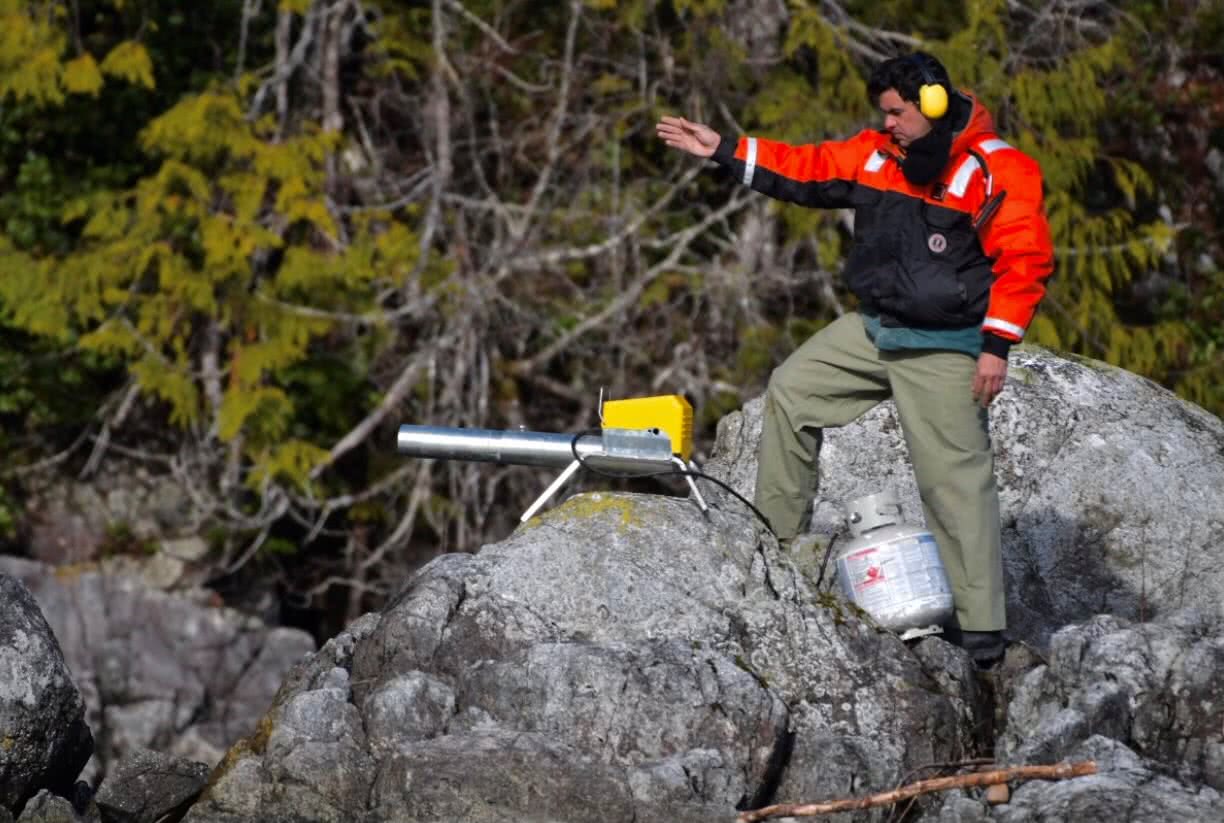The Environmental Unit (EU) plays a critical role in the Incident Command Post, providing Unified Command with science based recommendations to minimize the impacts of oil upwelling from the MV Schiedyk on the environment. The unit is comprised of experts and knowledge holders from the Mowachaht/Muchalaht First Nation, Hesquiaht First Nation, Nuu-chah-nulth Tribal Council, Environment and Climate Change Canada (ECCC), the Canadian Wildlife Service, BC Ministry of Environment and Climate Change Strategy (BCMoE) , Fisheries and Oceans Canada (DFO), BC Parks, and Grieg Seafood, with a shared goal of protecting environmental and cultural sensitivities around the shipwreck site.
Through collaboration and consensus, the EU preforms various tasks ranging from Shoreline Cleanup Assessment Technique (SCAT), to Net Environmental Benefit Analysis (NEBA), to assembling and inventorying Resources at Risk.
Members of the Mowachaht/Muchalaht First Nation play a critical role in the Environmental Unit. Their Traditional Knowledge is essential to understanding and protecting the environment around Bligh Island. Mowachaht/Muchalaht Traditional Knowledge is integrated with science from ECCC, DFO and BCMoE, and is used in a variety of EU tasks and objectives, ranging from where to sample, which beaches to find specific species, where marine mammals traditionally travel and feed, to weather and current patterns in Zuciarte Channel.
Here is a sample of some of the work the Environmental Unit is engaged in:
- Sampling crabs and filter feeders to determine the impact of hydrocarbons, if any, on the local environment and food chain.
- Combining scientific data on weather, sea state and biology, with Mowachaht/Muchalaht Traditional Knowledge to identify a window of opportunity for the Technical Assessment to proceed. This assessment identifies when the work will have the lowest impact on the environment in Nootka Sound.
- Monitoring five sites at risk of oil contamination across 100km of shoreline by taking photos of those sites and regularly analysing for any changes.
- Monitoring marine mammals in the area and being prepared to respond if an animal becomes impacted by oil.
- Monitoring birds in the area and deploying bird deterrents to keep birds away from the boomed area as well as being prepared to respond if a bird does become oiled.
- Mapping and monitoring Resources at Risk such as clam beds, estuaries and areas of cultural significance using both the First Nation’s and English place names.
- Developing and implementing plans including the Wildlife Response Plan, the Sampling Plan, and the Habitat Survey Plan, among others.
- Contributing to and reviewing plans developed in the Incident Command Post by other units, including the Decontamination Plan, Waste Management Plan, and the Incident Action Plans.
- Interpreting data collected by field teams for use by other Incident Command sections, and
- Providing a Common Operating Picture.
As work begins on the Technical Assessment in the upcoming weeks, members of the Environmental Unit will be on the water monitoring environmental and culturally significant areas and wildlife, as well as working remotely in the Incident Command Post, supporting the next important steps to mitigate any potential threats posed by the MV Schiedyk.

